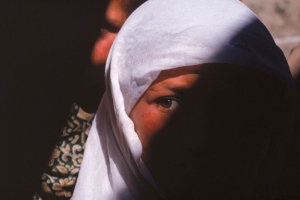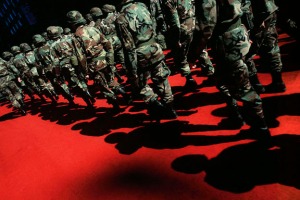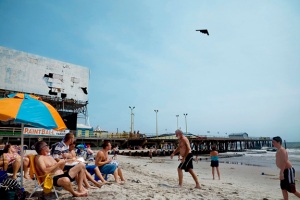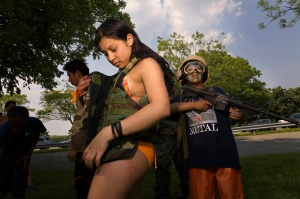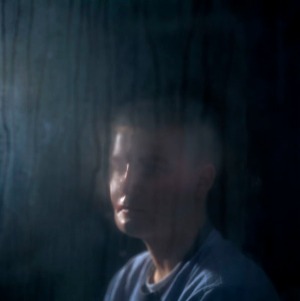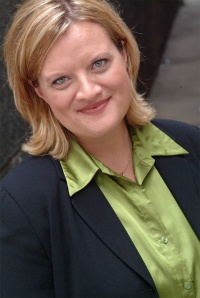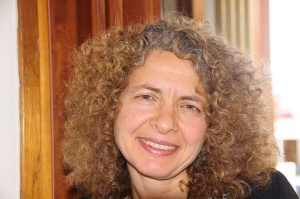Archives
Social Media
Blogroll
- 100 Thousand Poets for Change
- AVAAZ
- Buddhist Peace Fellowship
- Burners Without Borders
- Code Pink – Women for Peace
- Combat Paper Project
- Granny Peace Brigade
- INCITE! – Women of Color Against Violence
- Institute for Policy Studies
- Iraq Veterans Against the War – Member Blogs
- Iraqi and American Reconciliation Project
- Jan Berry's Blog
- Mike's High School News – Michael Moore's Student Website
- National Priorities Project
- Oregon PeaceWorks
- Peace Action – Peace Blog
- Split This Rock – Blog This Rock
- Syracuse Cultural Workers
- The Ruckus Society
- True Majority
- Voices for Creative Nonviolence
- Waging Nonviolence
- War Resisters League
- Warrior Writers
- Women Against Military Madness
Categories
A Brief History of My Reactivism: An Interview with Michael S. Moore
Michael S. Moore is a California artist. He spoke with 10 Years + Counting’s Sandy Maliga about his essay, A Brief History of My Reactivism.
[SM] Please describe the project.
[MM] The “project” is my ongoing response to America’s war[s] with the world at large as well as its corporate controllers’ war with the American environment and economy.
[SM] What motivated you to do it?
[MM] I despise hypocrisy.
[SM] Were there any surprising outcomes?
[MM] That it has gone on so long [and that, although this is naïve, the inspirational circumstances have continued unabated for so long, ongoing].
[SM] Does the series speak to issues about war in general?
[MM] The war is in men’s minds for men’s minds, eternally.
A Brief History of My Reactivism
A year after it became obvious that the Bushwhack Crew was coming to power [as the media’s sudden re-demonization of Iraq in September of 2000 clearly indicated] I was In Manhattan just before their remaining agenda was inserted and just after the towers fell. There was a brief euphoric lapse of rationality among some [“…dancing in the cafes at night and revolution in the air”, but that shit never lasts] in recognition that a desperate message had been sent to which we as a nation could respond with empathy, possibly initiating the beginning of an era of reconciliation, but, nah, wrong recipients; the worst, in fact. So within weeks we went to war, never-ending, with the world, ostensibly in the name of Democracy but in actuality on behalf of an evil and desperate cabal of unsustainable extractionists.
During that brief interim I was staying on the upper west side, worrying as planes in holding patterns from JFK or Newark would circle the city; returning to the west coast I painted a painting called “Two Airliners” – the sky had certainly been recontextualized.
Within a very short time “we” were using our awesome military superiority to yet again fail to overwhelm a backward third world country and every day I felt obliged to produce a scatological cartoon in reaction to whatever outrageous piece of propaganda du jour the media spewed forth most infuriated me, a collection loosely titled “Demockery, or, With Liberty and Justice for Oil”;
http://www.mikesmooreptgs.com/demockery_gallery/demockery/index.html
This went on for a couple months, gaining an enthusiastic if limited audience until I decided the whole enterprise was just “allowing the ‘terrorists’ to win” and returned to my own work.
Of course, despite my best efforts to ignore them the terrorists kept winning, or at least pushing, on all fronts, and soon enough I became embroiled in a struggle to keep what came billed as the “largest coal plant in the west” out of my Nevada backyard. Strangely, but fortuitously, that degradation was defeated, though not immediately and not without cost. It is doubtful, in the political climate of 2011, that such an outcome could be repeated.
Meanwhile on another front the terrorists, shockingly awful, made good on their intention to invade Iraq, and with war all around and more people getting pissed at the US of A every day I revisited an earlier, less strident, series, a selection of drawings and paintings called “Pacific Theatre” [2004 – 2008, roughly]. These works were based on souvenir photographs of various engagements during the Second World War my father had collected during his time in the Navy, which I found tucked away in his desk after he died.
Midway through this re-visitation of the War in the Pacific my seldom-seen but ever-cryptic son announced he was enlisting in George W. Bush’s Army, which inspired a good deal of discussion and analysis to say the least, and put the project in a whole new context not to mention our several relations to the war, generally. Out of his service came a further – into 2009 – extension of the project, as while he was stationed in Korea he sent me photos from those military archives to work from.
The most recent and personal investigation of this subject, as war goes on on all fronts, has been to use Bryan’s actual photographs from Afghanistan, where he was deployed in 2009 -2010 [and will be again, most likely] to make simple, meditative ink drawings, which by now, without the benefit of any distance at all, become merely a way of reaching towards an experience which is, for the most part, men and machines in a landscape and tribal culture that passionately wishes them away. For me this is strictly personal; the drawings merely depict what is there; my judgments remain implicit, but suspended.
Increasingly these bloody and bloody-minded spectacles seem to be mere circuses dedicated to distracting us from the war being waged here at home by shadowy corporate entities dedicated to the demolition of the most essential aspects of our survivable environment; as I said above, prevailing against a coal plant backed by the might of empire [as opposed to the might of the much weaker – ten years ago – Cheney empire] would now be unthinkable. Thanks to the sleazy stealth of the Obama BLM in recent years tens if not hundreds of thousands of acres have been auctioned off to be fracked for “clean” natural gas, with no oversight and the potential to completely destroy aquifers and local waters from sea to shining sea, as they say.
Without “energy independence” though, the “terrorists” win, they say. Whereas, once our air’s destroyed and the waters are gone, no terrorist in their right mind will want anything to do with us. Clearly a ‘win-win’.
On the other hand, who are these “terrorists”, anyway? Some poor fuck in a turban with an RPG who’s willing to sacrifice himself because he hates the freedom we assume to incinerate his family with a mouse-click from a windowless bunker in Riverside, California, or the individuals who perpetrate infamy in the demented spread of meaningless “democracy” across the world while destroying all potential for life that doesn’t pay them for the privilege here, there, and everywhere?
Or, as my usually cheerful brother Kirk Moore [ http://www.wmkirkmoore.com/] put it;
“The unfathomable depth of the warmongers’ greed has plunged us and the world economy into inescapable debt and looming ruin. But they don’t seem to care…as long as they keep getting richer at everyone else’s expense (poverty or death…doesn’t matter). Everyone has drunk the Konsumer Kool-Aid…and now we’re caught in a vicious, self-perpetuating circle to the bottom.
Without massive production/consumption the system breaks down and we starve. With it we deplete all our resources and starve. Anyone with half a brain viewing our species from outer space would just shake their heads and fly away, saying “those assholes are fucked”.
Not to worry, however…Nature bats last and will remove our blight from the planet. It won’t be pretty, but cancers must be dealt with.”
Well, to paraphrase Scoop Nisker, “If you don’t like the news go out and make some of your own”…just don’t expect that it will, in these triumphal times, be reported…and don’t get me started on the so-called “free” press; as Allan Weisbecker says “the bullshit is relentless and it comes from everywhere”.
Michael S. Moore
Posted in Uncategorized
Leave a comment
Dancing Our Way to Healing
Several weeks ago I sat on the floor of Studio 300 in the Barbara Barker Center for Dance at the University of Minnesota. All throughout grade school, middle school and most of high school I dreamed of becoming a ballet dancer. During my junior year of high school I took an American Government class where I discovered my second love: politics.
Abandoning my dream of becoming a dancer, I came to the University of Minnesota where I am studying political science. Being back in a dance studio and taking a formal dance class after two and a half years, I fell back into dancer mode easily, and remembered what had kept me dancing for so long. At the beginning of our class on this day we sat in a circle and introduced ourselves and stated if we had been to a dance or theater performance in the last week. One of my classmates described “REMEMBERING 9/11” a piece by two doctoral students in the theater program at the U. The piece was powerful and thought provoking for her, so I decided to contact the two creators.
After three days of rehearsals, “REMEMBERING 9/11,” a theater piece by Elliot Leffler and Mike Mellas, was staged throughout the Rarig Center at the University of Minnesota and outside on the West Bank of campus. Comprised fully of volunteer actors, the interactive piece provided a variety of perspectives on 9/11 and its aftermath.
Leffler and Mellas met in their doctoral program in the U of M ‘s theater department. Prior to creating “REMEMBERING 9/11” both men had experience in socially conscious art, having done topical workshops in schools and prisons. Leffler initially conceived of the idea for the project and then asked Mellas to join him as a co-creator. On the first anniversary of 9/11, Mellas attended an interactive theater piece that proved impactful for him. In the years following 9/11, Mellas continued returning to that memory. He was driven to create a piece that would be interactive and similarly create a forum for a community dialogue where all voices could be safely shared and heard, yet simultaneously challenged. Mellas noted that we tend to feel compelled to discuss 9/11 yet decreasingly have venues in which to constructively do so.
From the outset the two men knew they wanted the piece to be a collaborative effort among volunteer actors. Actors were given “homework” assignments that led to contributions to the piece. In addition to creating an interactive piece, Leffler and Mellas wanted to ensure that they included a variety of perspectives, both in opinion and background.
The dialogue at the end of the piece was the culminating moment, the true goal of creating the piece. Mellas asserted that he feels that action is important, but similarly important is processing and discussing, and that reflection must be had before action can be taken. Among the audience members were individuals that were in grade school at the time that 9/11 happened and individuals who were grade school teachers at the time. One of the reactions that stuck with the two creators was that of a student who said that they felt “betrayed” by their teachers, as they were kept out of the loop as to what was happening, mainly on the basis that they wouldn’t be able to understand the events or their implications. A teacher in the audience reacted to this sentiment, stating that they felt helpless, as they were tied to their classrooms, unable to turn on a TV, and fully grasp what had happened until they went home at the end of the day.
Ten years ago I was 11 years old and in sixth grade. My concerns lied mainly with ballet class, if my mom had washed my leotard, what role I would get in the Nutcracker and everything else ballet related. I’ve since left the dance world, put my pointe shoes in the closet and embraced the world of politics activism. But stepping back into the studio, I’ve remembered what I forgot to miss. But my values and priorities now lie in different places. No longer do I identify primarily as a dancer and an artist, but rather as a progressive and an activist. Speaking with Leffler and Mellas served as a reminder not only of the personal impact art can have on one but how societally profound it can be.
Leffler will continue with the theme of politically oriented theater in March, when she will direct a piece on the Tea Party.
Posted in Uncategorized
Leave a comment
War, Imperialism, and #Occupywallstreet
10 Years + Counting talked with organizer Prachi Patankar about the South Asia Solidarity Initiative and War Resisters League‘s call to action at Zuccotti Park. Below is the group’s invitation, followed by an interview with Prachi about the work they do:
October 7, 2011 marked 10 years since the U.S. invasion of Afghanistan and the start of the Global “War on Terror.” Issues related to US-led wars and militarism should be central to the visions that are forming at #OccupyWallSt and the other #Occupations around the country. In an effort to highlight the devastation US militarism has caused across the globe for decades, we are creating an artistic intervention at Zuccotti Park. Snapshots of US military actions over the last 60 years will be displayed on signs in a bold embodied expression meant to spark discussion and include the voices of occupied peoples. We will also be distributing information on how to engage with the super-committee, with the internal committees of #OccupyWallSt as well as Afghan and Iraqi-led peace groups. Join us!
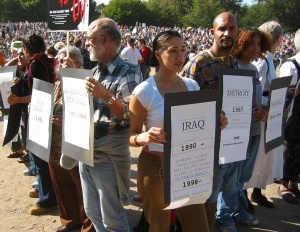
1. Please describe your project. What inspired you to tackle this issue?
An artistic intervention at Zuccotti Park to highlight the devastation US militarism has caused across the globe for decades
2. What have you learned from this project? Were there any surprising
outcomes?
We did this action at Central Park in 2003 at one of the first anti-war
rallies against war on Iraq. Many people at Central Park commented that this was a educational experience for them to learn about how long US has been intervening with military action across the world, where they still have bases. It inspired many to participate in the anti-war movement.
3. How do you wage peace each day? Any pointers for the rest of us?
I, as part my group South Asia Solidarity Initiative work in collaboration and partnership with many peace organizations, collectively spread the anti-warmessage and awareness about it broadly. We collaborated with the War Resisters League recently to produce a popular-education curriculum to connect the issues of war and the domestic economy.
4. If applicable, how can people get involved in your project?
We want people to participate in this action on Friday, October 14. We expect to repeat this action in many different forms at various places. We hope that people will be inspired to replicate it all across the country to highlight the issues of war as central to the demands of the Occupy movement.
An Open Letter on the Word “Foreign”
Kevin Buckland of 350.0rg shared his recent article with 10 Years + Counting connecting the cost of war to the KeystoneXL for Tar Sands Action:
To Whom it May Concern –
[Please note: This letter about the war will be written in the driest way possible. Many things, such as the silence after a bomb falls, will be ignored. Children’s limbs will not be mentioned, nor will death tolls. Rather, we will let these manufactured tragedies sit silent. Please let that silence rest heavily, like the silence of a soldier who returns from a war but will not speak of what he has seen.]
Two weeks ago my mother bought a senior-citizen’s bus ticket to Washington D.C., where she would be arrested for the first time in her life. She was one of more than 1,200 people who participated in the massive civil-disobedience protesting the Keystone XL pipeline. This proposed pipeline would provide a pathway to bring the oil-soaked sands of Alberta – the dirtiest oil on the planet, to refineries in Texas. This is a very long way to hope no screw ever comes loose, or no truck ever digs in the wrong spot; we already know what an oil spill can do to drinking water, or crop land, or people.
Supporters of this pipeline cite our need for independence from foreign oil (though if Canada is no longer foreign, perhaps it would be more advisable to share their public health system). Those who support the pipeline can be seeing using the 10 year anniversary of 9/11 and the invasion of Afghanistan as proof that we should be getting our oil from our friends who have it, rather than trying to make friends with those who have oil.
…Read the rest here.
To join the Tar Sands Action to stop the Keystone XL pipeline at the White House on November 6th, sign up here:
The War and Wall Street
October 5, 2011
This week will be an exceptional one.
It will mark a decade at war and the beginning, perhaps, of a sustained, cross-issue, multi-generational struggle to create real change in this country we care so much about.
Take a moment to wrap your mind around what has happened over a few short months: The movement to protect collective bargaining and worker rights that started in Madison; 350.org’s world-wide Moving Planet events; the Tar Sands action in front of the White House; occupywallstreet and occupytogether; and the events being held nation-wide this week to mark the ten year anniversary of our nation at war. Across the country people are demonstrating, literally and figuratively, that change is in the air.
Acknowledging the interconnectedness of these movements will increase our options and odds of success over the long haul. The wars in Iraq and Afghanistan provide a perfect example of how a single issue links to many other fronts.
At a cost of $1,250,000,000,000.00 and counting, the wars in Iraq and Afghanistan have imperiled global financial stability, caused a massive drain on the U.S. economy and continue to be a major contributor to the recession. The war economy has wildly enriched a handful of opportunistic individuals and corporations. Military contracts have increased to over $400 billion and are highly concentrated, with Lockheed Martin, Boeing, Northrop Grumman, Raytheon and General Dynamics accounting for over one-third of all Pentagon contracts. And that does not even include Halliburton, whose Pentagon contracts jumped from $483 million in 2002 to over $6 billion in 2006.
The wars have also caused pollution on a massive scale. A decade of war has resulted in the radical destruction of forest cover, an increase in carbon emissions and the contamination of local water supplies. One of the major environmental threats comes from the use of Depleted Uranium in U.S. ammunition. Contaminating both soil and water, and with a half-life of 4.5 billion years, DU is persistent and carcinogenic. War-related pollution continues to affect the health of Iraqis and Afghans and has resulted in a demonstrable spike in cancers, birth defects and infant mortality in Iraq. The potential effect on the health of U.S. troops deployed in the region is only beginning to be acknowledged.
The war has also impacted jobs and unemployment. 8.3 jobs are created by every $1 million in military spending. On the surface this might seem like job creation, but dig deeper and you discover how many jobs $1 million can buy in other sectors. An investment of $1 million would create 15.5 jobs in public education, or 14.3 jobs in the health care industry. A million dollars spent on construction creates approximately 11 direct and indirect jobs. In essence, nearly twice as many jobs could be created if we brought our war dollars home and invested them wisely. Ironically, due to poor employment prospects during the current recession, many poor and working class young people are now forced to consider enlisting in the military as perhaps the only way to get a job or raise the funds needed for a college education.
Finally, there is the human cost of war. Death, injury and human suffering can never be quantified. We can count the coalition dead: 4,795 in Iraq and 2751 in Afghanistan. We can count the wounded: 32,150 in Iraq, 13,011 in Afghanistan. We can attempt to count the civilian deaths in both countries, estimated to be over 137,000 by the most conservative accounts. There is no way to begin to calculate the number of innocent civilians who have been wounded.
By any measure – human, environmental or economic – these wars have created a sobering legacy of violence, pollution and waste.
The things that will make this nation healthier, happier and more economically just are deeply interwoven. This exceptional year illuminates these connections, and sends a message loud and clear: we can amplify our voices by standing together.
Camille J. Gage is a Minneapolis artist and the national project coordinator for 10 Years + Counting , an artist-led initiative to encourage creative responses to a decade at war.
The author would like to acknowledge the Eisenhower Project, which provided many of the statistics that were used in this essay. For more information visit:http://costsofwar.org.
Posted in Uncategorized
Tagged Camille Gage, costs of war, occupywallstreet, the costs of war, Wall Street
Leave a comment
An Enduring Aftermath: An Interview with Nina Berman, Documentary Photographer
Minneapolis curator and arts writer Tricia Khutoretsky interviews photographer Nina Berman for 10 Years + Counting. Nina begun taking photographs 10 years ago, and has since been working on ongoing documentation of America since the invasion of Afghanistan.
Photographs are often a glimpse into the past, a way to remember and a way to record. Nina Berman’s award-winning and internationally exhibited documentary photographs however seem to hold a sort of timelessness. Perhaps this is because many of the images she captures are of our country changed by a war that is equally endless. From the legacy left on war veteran’s bodies and minds, to images taken in Afghanistan pre-invasion, or her exploration into America’s troubling ideological landscape… her photographs attempt to understand subjects that she feels personally curious about. That genuine search for deeper insight translates visually in a way that is memorable and provoking. In the following interview, Nina and I converse about the coinciding 10 year anniversary of the invasion of Afghanistan and the stories and motivations behind her decade long study of a nation at war.
How do you feel about the 10-year anniversary of Afghanistan? From your perspective, how do you think people will react on that day, if at all?
I imagine that most people don’t know the significance of that day, I’m assuming that it will go unnoticed. I imagine that some troops who participated will probably remember it. I imagine the people of Afghanistan will certainly remember it whether or not there will be public remembrance. I had written a previous piece on my blog mentioning that day and when I turned it in to editors, they didn’t understand what the day was, it’s not marked in our public conversation. Days of invasion aren’t really recognized in our culture, it seems to be more about the days we ourselves were attacked… although that isn’t entirely true…D-Day is a big moment in our history.
Maybe 10 years is too soon, for this day to be marked in our history? And perhaps it is because the war is still ongoing?
Yea, I think it is because the war itself is so mysterious– the purpose of it’s origin, why we went, what we wanted to accomplish, who we’ve killed, the money we’ve spent, the lives we’ve lost. All of these things are unknown and there isn’t any serious conversation about it. It is becoming more chronic and endemic. I could see this war going on forever.
Considering how unknown the war and places like Afghanistan are, I’m curious about your series Under Taliban, in which you photographed Afghani women. How did you manage to gain access to create such intimate images?
Well, those pictures were taken before the U.S. invaded. They were taken in the 90’s, which is interesting because many people find them to be contemporary present images because they are very similar to what we see now. But they were actually taken in 1998 and 2000.
That’s interesting also because I don’t know enough about Afghanistan to recognize a time period, or it’s remarkable that perhaps not much has changed for the better since the invasion…
If you look back at the justification for invading Afghanistan, part of the reason we were told that we needed to go there was to liberate women. America dropped some strange propaganda during those early bombing raids. Some things have gotten better for certain classes of women since we’ve been there. But the idea of one country invading another country to liberate half their population overnight is insanity, in my mind. My pictures were mainly taken in Kabul dealing with issues of poverty and oppression. These are still issues in Afghanistan, 10 years of war hasn’t been able to change that, but I haven’t been back since 2000 and I only know this from friends who are there.
There are always 2 sides of a story which brings me to wonder about your Homeland series, where you turn the lens away from the Middle East and focus on what is going on here in the U.S. over the past 10 years, and how the war has affected us at home since 9/11.
With Homeland…I think there are certain mythologies and narratives that we have been told since 9/11 and are still told today. I hope that the best of my photographs give viewers a path into reconsidering these mythologies and narratives in a way that doesn’t demean the subjects but personally connects you. In the U.S. we are told stories: we are the greatest country in the world, we are especially blessed by god, we are the only superpower in the world, and that what we say is more correct and more enlightened than what other people say. Because of this special quality of America we are allowed to do things. I hope that my pictures show what happens when this ideology is subscribed to.
You’ve been photographing the effects of 9/11 on Americans for 10 years now. Besides the actual events of that day, what instigated your exploration into issues about the reality of war?
The first picture I took for the Homeland book, of soldiers on a red carpet, is in response to the invasion of Afghanistan. It was taken on a Monday, and I believe that we started bombing Afghanistan on a Friday or Saturday, so it was taken just a few days before that. I looked at that photograph searching for any manifestation of the invasion. When you take pictures they lead you to think about other things. That particular picture was an important wake up call for me. It showed the military on the red carpet, did it signify royalty? Are these humans or mechanized beings? The colors are so crazy rich and it was a perfect day. It was taken at the Columbus Day parade in New York, which happens every year but that particular year the parade seemed far more militarized. These are the kind of things that I was thinking when I took it. That photo was my way into this project, which has now lasted 10 years.
Looking through your photographs from the past 10 years, I looked lastly at the Hedge series taken inside Wall Street. These photos seem different to me, with more focus on lights, color, and abstraction. What insight can you give me into your narrative with this series?
I’ve been interested in the idea that money has value and no value. Much of the way the world is shaped now is through computer screens. Some of the most powerful people in the world get that power through those screens. As an ignorant outsider, the screens are just a series of numbers, colors, shapes in a completely impenetrable world. Yet this is the world that drives so much of our economy and our choices. I wanted a way in, to see if I could make something that suggested a casino/narcotic like aspect to the financial market. It occurred to me after the financial crisis that I could photograph people losing their homes… but they’re just the victims for the most part. I don’t want to just photograph victims of things, in some ways that’s a cop out. You start to think the victims are the perpetrators if that’s all you see. I wanted to find some other way into the landscape of Wall Street, it’s like a theme park down there. You don’t really get a sense of what happens just being outside on the streets.
I noticed so much detachment in those images. I was drawn into those photographs because they seem unique in viewpoint within the context of the rest of your work, but yet there is a unifying thread.
I don’t know if it comes through in Hedge, but I’m also interested in the traders, who spend 12-14 hours a day looking at this stuff, they sort of meld into the machinery. They buy into whatever their system is, to become a billionaire on Wall Street, through a machine. People make more money on those machines in a day than I make in a year, it’s beyond comprehension. In some ways its similar to some of the veterans I photographed. The veterans also bought into a belief system, they made certain compromises or assertions. So then how does that become mapped on them, on their bodies and on who they are? I think if you look at all my work there is a connection between the individual and a prevailing ideology.
Speaking of the veterans you have photographed…the Marine Wedding photos are an intense example of impact on the individual. I can look at photographs of this severely disfigured veteran, and yet if I saw him in person I don’t think I would know how to react or where to look. What did you feel when you photographed him?
I don’t have that reaction when I look at disfigurement. I maybe have a flash of hesitation and then I become very interested. Not voyeuristically, but more like: who is this person and how do I get beyond this very physical nature? But I did have years of preparation. I remember being at Walter Reed seeing a bunch of young men in wheelchairs, feeling like I wanted to weep and trying to contain myself. I have images of scenes from that place that I couldn’t photograph but that I still have in my head, that totally freaked me out. But not because a person’s face was blown off, because there was something else going on that made me feel sad.
Given those experiences and the photographs you have taken, what is it that you want people to know or think about war veterans?
I think for me, the most important take away is that we tend to think of war as something that happens and then it doesn’t happen anymore, a finite thing. I hope people will realize that not only is there an enduring legacy with individuals, but if you talk to anyone that is related to a war vet, it changes the whole dynamic of a family, sometimes in a positive way but lots of times not. I hope when people look at the pictures they see war in a much more serious and more personal way. It’s not just something that people debate in Congress. That sounds kind of simplistic, but really that is much of my intention, to show that the aftermath is enduring.
I often think about the intentions of photographers who take photos as both a profession and an art form. Recently, I listened to a panel discussion about art and war where panelists talked about photographs, and how bombarded we are as a society with digital photographs daily. As a photographer in this reality, how does this influence your choices?
In terms of the sheer number of images that are out there, I think in some ways it is a really good thing. The idea of people being able to express their reality around them with images is a fine and admirable notion. But for those of us who see ourselves as commentators, analyzers and in some ways mediators– it means that you have to be far brighter and much more intentional about what you are putting out there. It raises the bar much higher to make your work rise above the endless flux of millions of images. One thing that has been lost with the digitization of photography though, is a corresponding increase in really smart curators and editors. Instead we have photo streams and flickr pages and these are totally unedited. We need curators and editors, if you look at what’s happened since 9/11, the most interesting things are happening in gallery spaces. Not in the newspapers, not on television, not in the places that we used to look, but instead from people who have taken a long-term look at this and said, let’s really present something instead of just flashing it up on a page for 3 seconds. That’s what I look for when I look at photographs. What’s the vision, what are they trying to say? Is it just a nicely composed image, because for me that’s not enough at all anymore.
The idea of gallery space as a place to learn truth is important, and I’m curious about your experience with the Whitney Biennale. Tell me more about showing photographs in a space where people could take time with them, rather than online or in a publication. What difference did that make to you?
For me, those spaces are the most important venues. Even though I come from a place of photojournalism working for magazines I don’t see them, at least not the mass-market ones, presenting photography in a way that works for me. I don’t like stories sandwiched in between stories… like this story is about taxes, and then this story is about the busted up veteran and this story is about how to lose weight. I want to get away from that. In a space like the Whitney, people go in to take some time and consider things. It blows my mind that I still see people going into art museums. How amazing that is, just to spend an hour or the day, and see what I can feel and see what I can think. It’s absolutely beautiful. I work really hard to make sure I can show my work at venues, because it’s not something that is financially rewarding. When I see people going into a place like the Whitney Biennale or other galleries I am personally grateful that they take time to do that.
What’s coming up next for you, what projects are you working on?
After the Homeland book, which came out in 2008, I joined a photo collective based in Amsterdam called NOOR, made up of 10 international photographers. In conjunction with this group, I started to see if I could work on something else other than American politics and issues of war. I thought about the environment and tried to explore what would be interesting and challenging, something that doesn’t repeat what other people do. Right now I’m working on a project on gas drilling and I feel like I have finally found my creative spot. Sometimes that takes me a long time. I’m looking at this whole fracking process, which sounds technical and boring, but I’m coming at it from a different angle. I hope to get those pictures on my site and start looking for exhibition venues at the end of year.
What motivated you to find an outlet that takes you away from the war and political images?
There was a danger that I was starting to repeat myself. There is still one project that I want to do and that might be the end of this war series, but I don’t know. Maybe it is something I’ll do all my life. I also live in a time when the world is on the brink environmentally and I want to see if I can approach that photographically because it is something that I think about a lot. I usually approach projects that have to do with things that I can’t stop thinking about, I feel confused about or uncertain. I started photographing veterans because I didn’t want to be just another zombie watching TV not being engaged. I wanted to see what this personal experience was about, who are these people who are going to war and what does it mean to be wounded and how can I connect with them? Fracking is a big issue in Pennsylvania and it will be in New York State any day now. This is where I live, this is my water supply and my air, I should be engaged and involved with it, so that is what I am doing.
All photos credit of Nina Berman/NOOR images.
For more information about Nina and her work, visit: www.ninaberman.com.
What Needs Changing (the Peace Movement)
Transcribed from a speech given at Military-Industrial Complex at 50 Conference by Jonathan Williams, manager of communications and online organizing for Peace Action and co-founder of Civilian-Soldier Alliance:
Thanks to everyone for organizing this conference. I appreciate the opportunity to speak with you today.
How do we win? How do we get our demands met? We need power. But what is power? How do we get it?
Simply put, power is the ability to act; the ability to end the wars, the ability to convert our economy, the ability to change the world. But how do we get that kind of power?
A lot of my mentors have said there are two kinds of power in this world: there’s organized money and there’s organized people. Which one do you think I’m here to talk about?
So how do we organize people? We can’t get that organized money, but we have the other kind of power. We have the numbers. We have the majority of people on our side.
There’s a great quote that goes something like this: we have to stop thinking that we’re going win because (1) the majority of people are on our side, (2) the facts are on our side, or (3) because we’re morally right. Our opponents have none of these things, and they are consistently winning.
How are they winning then? It’s because they have power. So how do we get that kind of power?
In my organization, Civilian-Soldier Alliance, we talk a lot about leadership. In our work, leadership and relationships are what we think actually organizes people. That’s where you get people power.
So how do you become a leader for social change? None of us are born as social change organizers. We don’t pop out ready to change the world. That’s not how it works. It is a process of transformation. It’s a transformation of an individual to become a leader, and in turn, transforming lots of individuals transforms society. We call thistransformational organizing.
Read more here.
No Place Called Home
Kim Schultz on the making of her play “No Place Called Home”, a reaction to 9/11 and the costs of war.
Recently we as a nation commemorated the anniversary of 9/11. I along with my fellow New Yorkers and Americans mourn the loss of those almost 3,000 lives that fateful day ten years ago. It was a tragedy unlike any I’ve ever experienced in my lifetime. An attack of epic proportions for the U.S., more commonplace, perhaps in other parts of the world, but a devastating attack for Americans. What frightens and horrifies me however is how we have transformed as a nation since then, who we have become as individuals and as a country since the attack on 9/11. We were attacked by Islamic terrorists, not Islam itself. And yet, attack Islam, we do.
This is not who we are as Americans or at least who we were. Have we lost all decency? All reason? When did we decide to go to war with everyone who is different from us?
On the tenth anniversary of 9/11, I was down near the World Trade Center site performing a piece of a play called “No Place Called Home,” I wrote about the Iraqi refugee crisis – a crisis created because of our invasion of that country. While performing a short section on the street in front of City Hall, several individuals shouted such things as “God bless America. Screw Iraq!” and “Bang! Bang!”
Now, we can say these were freak events. But I don’t think that is the case. These people spoke their minds as our nation’s freedoms allow us to. But what I found most distressing and disturbing was the anger and ignorance under the words. Why do we have to disregard, even hate the other, in order to be an American? Since when do patriotism and bigotry go hand in hand?
Over 4 million Iraqi people have been displaced since the war began. 4 million made homeless from a war most Americans now look at as a mistake. This is to say nothing of the 100,000 innocent killed in Iraq. Most Americans don’t know this– or choose to remain ignorant.
Every Day I wonder what I can and should do about this. One thing I can do and we all can do is speak up for injustice and inequality through art by whatever means we have-to give voice through our art. 10YAC allows just that—an opportunity to speak up and say “enough”, an opportunity to do right by others through the powerful medium of creative creation. Art is powerful and unique. It makes the audience feel and connect in a way articles, interviews and news articles never can. What do you want to say? How can you say it? Just start.
I was never an advocate for anything. Prior to my trip, I knew very little about Islam and now? Now, I wrote a play about Iraqi refugees, giving voice to those 4 million people and write blog posts about anti-Islam bigotry. What can you do? Let your voice be heard. It can change the world.
Originally from Minnesota, Kim Schultz is an actress, writer and comedienne. Nationally, she has worked at The Guthrie Theatre, Childrens’ Theatre Co. ,Theatre de la Jeune Lune, The Chicago Improv Fest, The Brave New Workshop, HBO Comedy Showcase and the Edinburgh Fringe Festival. Currently residing in New York, Kim has performed at The Hamptons Shakespeare Festival, Oberon Theatre, 3LD, Themantics Group and The Zipper Factory Theatre. She also created, produced and acted in a regionally televised comedy improv show on ABC called Comedy Hotel. Kim wrote and performed a critically acclaimed autobiographical solo show performed off-Broadway called, The F Trip. And after traveling to the Middle East in the fall of 2009, Kim was commissioned to write a play to draw attention to the Iraqi refugee crisis. No Place Called Home was directed by Sarah Cameron Sunde and enjoyed an off-Broadway run in NYC in the fall of 2010 and is currently touring nationally. Kim is a prize winner for a short story she wrote on fieldreport.com, has been published at humorpress.com, Futuretakes and is a NYC Moth storytelling champion for a story she wrote and performed about falling in love with a conman. Kim also teaches improvisation for people and organizations wishing to change their lives and laugh more. www.kimschultz.net
Poetry of Provocation and Witness from Split This Rock: Poem # 15
Arguments
For the people of Iraq
consider the infinite fragility of an infant’s skull
how the bones lie soft and open
only time knitting them shut
consider a delicate porcelain bowl—
how it crushes under a single blow
in one moment whole years disappear
consider: beneath the din of explosions
no voice can be heard
no cry
consider your own sky on fire
your name erased
your children’s lives “a price worth paying”
consider the faces you do not see
the eyes you refuse to meet
collateral damage
how in these words
the world
cracks open
-Lisa Suhair Majaj
From Geographies of Light (Del Sol Press 2009)
Lisa Suhair Majaj is the author of Geographies of Light (winner of the Del Sol Press Poetry Prize) and co-editor of three volumes of literary essays: Intersections: Gender, Nation and Community in Arab Women’s Novels (Syracuse University Press, 2002), Etel Adnan: Critical Essays on the Arab-American Writer and Artist (McFarland Publishing, 2002) and Going Global: The Transnational Reception of Third World Women Writers. (NY: Garland/Routledge, 2000). She publishes poetry, creative nonfiction and critical essays in journals and anthologies the US, Europe and the Middle East, and has read at venues such as London’s Poetry International. She currently lives in Cyprus.

